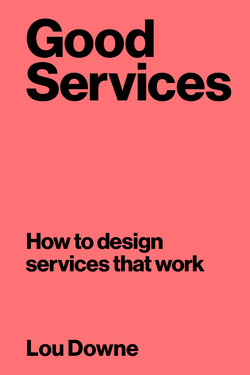Читать книгу Good Services - Lou Downe - Страница 38
На сайте Литреса книга снята с продажи.
ОглавлениеPurpose of your service = what your service does why it does it how it does it who it’s for
When you’re making the purpose of your service clear, you’ll need to think about four distinct things – what your service does, why it does that thing, how it works and who it’s for.
These things form a picture of what the purpose of your service is. For example, your service may be ‘dry cleaning’ like any other, but when that dry cleaning is collected from your user’s doorstep and returned in an hour, that service has a very different purpose and therefore value to your user than the average high-street dry cleaners. When thinking about how you’ll explain this to your users, it’s important not to forget about these four elements, and not to make one more prominent than the other. In the DVLA example we can see that it explained what the service did and how it worked, but barely touched who the service was for, let alone why the service did what it did in the first place.
Explaining how your service works without clearly explaining what it does, means your service will come across as either disingenuous or confusing. Like an advert for a new type of tool on a shopping channel that sounds brilliant, but isn’t clear what it actually does.
Likewise, if you don’t explain ‘how’ your service works, your users can presume complexity and difficulty at worst, or inconvenience at best, basing the expectation of your service on their experience of your competitors. Taking our dry cleaners as an example of this, you might expect your new door-to-door dry cleaners to need dropping off and picking up, unless you know that this isn’t how the service works.
Services are increasingly competing on ‘how’ they provide their service, not what their service does. Uber, Deliveroo and Airbnb are all perfect examples of this, taking the traditional services of taxis, food delivery and short-term accommodation booking and delivering them in a convenient way that increases their value to users. However, unless they describe why they do what they do, who their service is for and what their service does, these efforts fall just as flat as the DVLA trying to get the right users to register a medical condition.
When considering these things, ask yourself the following four questions and make sure they are clear to users at all points of the journey:
What does the service do?
Clearly express what the service tangibly does for your user. Be factual, avoid marketing promises. Stick to the functionality. What outcome will it achieve for the user?
How does the service work?
Sometimes how your service works is almost as important as what it does. Who is able to use it? How is it paid for? Is it a subscription or a one-off purchase? How quickly can you do the thing you’re offering? What is it about the way your service works that makes it quicker or more convenient for your users than any other? Are there any other benefits to your service besides basic convenience? Is your service sustainable or funded/made in a way that benefits society at large?
Who is the service for?
